
Unlock Your Device iCloud DNS Bypass Explained and Tested, Plus Easy Alternatives On iPhone 13

Unlock Your Device: iCloud DNS Bypass Explained and Tested, Plus Easy Alternatives On Apple iPhone 13
Have you bought a used iPhone or iPad with an active iCloud Activation Lock? Or perhaps you have an Apple device but cannot remember your iCloud password? Without activating iCloud, you cannot utilize locked devices in either scenario.
You might try contacting Apple customer service, but they won’t be able to assist you without user identification directly. Even after the Apple iPhone 13 device has been authenticated, you will still be bombarded with inquiries, and they may even want the original iOS device payment receipt.
One of the greatest free solutions to prevent these issues is to unlock your Apple iPhone utilizing iCloud DNS Bypass. Read on to know more in this iCloud DNS Bypass Guide.
Part 1: How Can We Use iCloud DNS Bypass for iOS Devices?
After a factory reset or restoration, every time you set up your iOS device, it will send an activation request to Apple’s servers. Apple responds to your request and displays your device’s status.
Additionally, if the Find My iPhone feature of your device is enabled, an iCloud Activation Lock screen will appear and prompt you for your iCloud account login information. The iCloud DNS Bypass can assist you if you forget your login information (Apple ID or password) or purchase a used device with an iCloud lock activated. It is a free approach to unlocking iCloud.
The readable names are transformed into numerical IP addresses via the Domain Name System (DNS). To launch the program, it makes use of a DNS server that serves as a host.
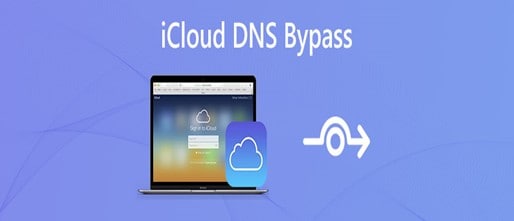
Use DNS to get around iCloud Server IP Address
You may first just ignore the iCloud DNS on your Apple iPhone 13 or iPad. The procedure is easy. Remember that the process must be completed by inserting the SIM card into your Apple iPhone 13.
Step 1. Turn on your Apple iPhone 13, then configure it according to the on-screen instructions.
Step 2. Select your language and nation. Click Continue to access the Wi-Fi settings screen after that.
Step 3. If prompted, click the I icon next to the Wi-Fi area.
Step 4. Click Connection Settings > Forget this Network to disconnect from the Wi-Fi network.
Step 5. When asked for a DNS server IP address, tap the I symbol to unlock the iCloud activation lock. Here is a list of places for your information:
USA: 104.154.51.7
155.28.90 Europe
Africa: 35.199.88.219
Asia: 104.155.220.58
189.47.23 Australia and Oceania
It is 78.100.17.60 on other continents.
Step 6. Turn on Wi-Fi and select the Wi-Fi network you wish to connect to by tapping the Back button on the left side of the screen. Enter your passcode after that.
Step 7. When you click Next Page > Back, the iCloud bypass page will appear.
Step 8. Use your device and configure your apps.

Use iCloud DNS Bypass Crash
- Step 1. The procedures below will help you delete iCloud after DNS bypass if you cannot utilize some features on your Apple iPhone 13.
- Step 2. Tap Menu > Applications after attempting the aforementioned technique.
- Step 3. To restart your smartphone, scroll down and tap the Crash option.
- Step 4. Select “Language and Country” > Select a Wi-Fi network, click Home, More Wi-Fi Settings, Configure Proxy, and then Manual.
- Step 5. In the Server section, delete the existing HTTP address before entering 30 different emojis. Type 8888 into the Port area, then click Save at the top.
- Step 6. To access the Unlock screen, tap Back > Next. To unlock the Apple iPhone 13 device, press the Home button.
- Step 7. When the Home screen appears, tap the Language choice.
Part 2: The Best iCloud DNS Bypass Alternatives to Unlock Your Apple iPhone 13/iPad/iPod Touch (Easy and Efficient)
Only if you bought a secondhand iPhone with an activation lock or want to restore the Apple iPhone 13 device but forgot that Find My iPhone was ever turned on do you need Dr.Fone - Screen Unlock (iOS) . Dr.Fone - Screen Unlock (iOS) is the most promising and user-friendly product of its sort currently available. With the help of this application, you can simply fix the iCloud activation issue. You don’t need to be an expert in utilizing the application because it is simple and intuitive.
Using Dr.Fone - Screen Unlock, you can get rid of the iCloud activation lock. Launch Dr.Fone and choose “Remove Active Lock” and “Unlock Apple ID” to unlock your iCloud. It still works if you have a used iPad or iPhone.
Dr.Fone - Screen Unlock (iOS)
Remove iCloud Activation lock without Password in Minutes
- Remove Apple ID/iCloud Account efficiently.
- Save your Apple iPhone 13 quickly from the disabled state.
- Free your sim out of any carrier worldwide.
- Bypass iCloud activation lock and enjoy all iCloud services
- Works for all models of iPhone, iPad, and iPod touch.
- Fully compatible with the latest iOS.

4,008,671 people have downloaded it
Here’s a step-by-step guide on how to use it
Step 1. Installing Dr.Fone on your smartphone and selecting Screen Unlock from the available options are the first steps in the procedure. You will note that there is a “iCloud Activation Lock Removal” option, among others, when you first use the Screen Unlock function. Simply clicking on it is all that is required.

Step 2. Before the bypassing process, please tape “Start”.

Step 3. After reaching the ‘Start’ page, Your Apple iPhone 13’s specific information will be detected to determine the appropriate operation process. Ensure that the data cable is properly connected during this process. Jailbreaking is required for iOS devices running 12.0 to 14.8.1, but for iOS 15.0 to 16.3, simply enter DFU mode twice and proceed to unlock. For detailed instructions on unlocking, you can visit this detailed guide about iCloud Activation Lock Removal.
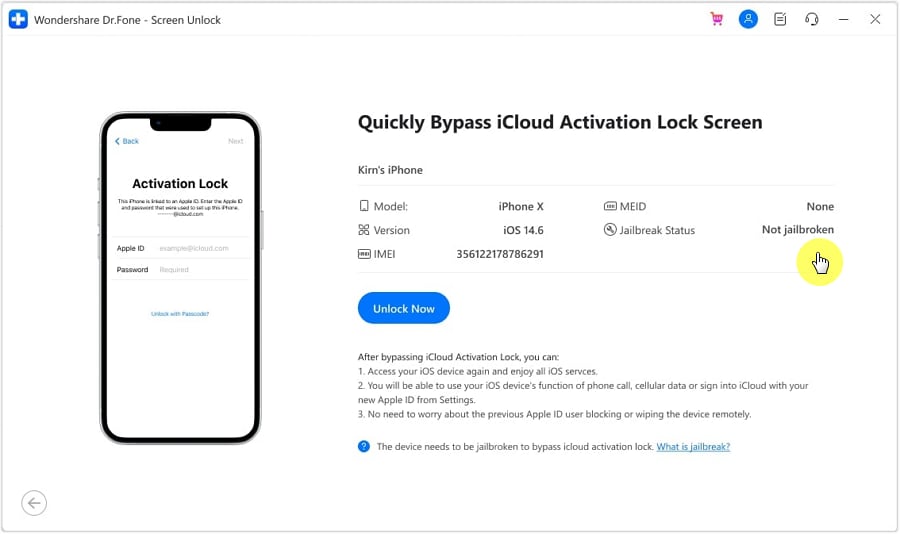
Step 4. Now we’re bypassing the activation lock, soon your Apple iPhone 13 will work without the activation lock.
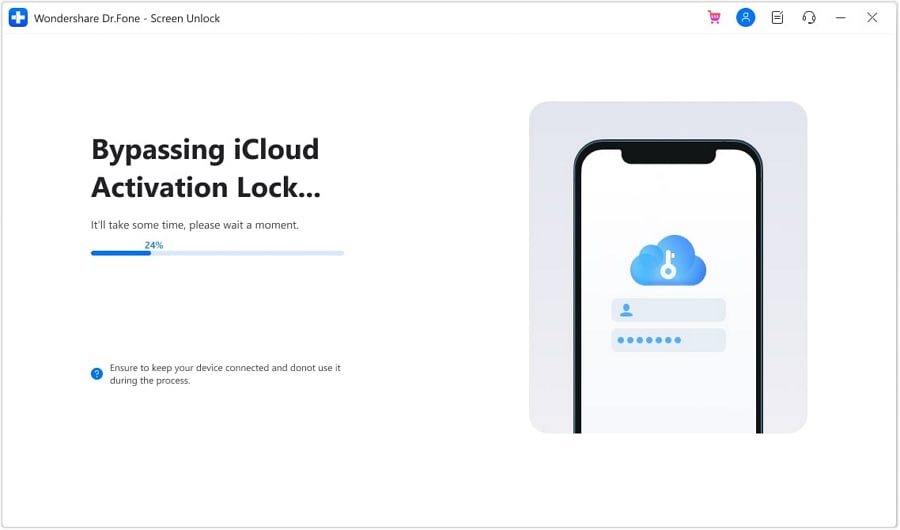
Part 3: FAQs
1. When Do We Require iCloud DNS Bypass?
We require it when our carrier locks our phone or when we buy a used phone and cannot use it because of an iCloud activation lock. The use of iCloud DNS bypass enables temporary access to the features and functionality of an iCloud-locked device. Domain Name Server, or DNS for short, serves the function of converting your domain names into IP addresses.
2. What Can iCloud DNS Bypass Do for Us?
When you need an urgent functioning solution for a locked iPhone, using iCloud DNS bypass is helpful since it gives you temporary access to all the features and configuration of an iCloud-restricted device. DNS, or domain name server, converts your domain names into IP addresses.
3. What are the Pros & Cons of iCloud DNS Bypass
This approach can be helpful, but it does have advantages and pitfalls of its own. These advantages and disadvantages are broken down as follows:
Pros
- You may use it without installing any software on the Apple iPhone 13 device, since you can do it in the Wi-Fi settings.
- The internet, camera, and games can all be used after the gadget has been engaged, making it simple to access.
- Utilizing this approach is cost-free.
Cons
- This technique only partially unlocks the Apple iPhone 13 device and represents a hack.
- The iCloud DNS bypassing technique has occasionally been reported as not working by users.
Conclusion
Now you have read all about iCloud DNS bypass, what is iCloud bypass DNS, whether DNS bypass is free, and how to iPhone DNS bypass, it is time to implement all the solutions and bear in mind that all DNS Bypass solutions are 100% free. Dr.Fone - Screen Unlock (iOS) is also a great tool to bypass screen lock, even if you don’t have any tech skills.
New Guide: How To Check iCloud Activation Lock Status On Your Apple iPhone 13
Apple’s iOS is renowned for its robust security features, including the iCloud Activation Lock. This feature plays a crucial role in safeguarding Apple devices against unauthorized access. It’s a way to ensure that only the rightful owner can use and access the Apple iPhone 13 device. Originally designed as a theft deterrent, the iCloud Activation Lock on used Apple Devices becomes especially important when buying or selling second-hand phones.
Understanding the status of this lock is essential to ensure a secure and legitimate transaction. In this 2024 guide, you’ll dive into how to check the iCloud Activation Lock status. It’s a critical step for anyone involved in the trade of used Apple devices online or otherwise.

Part 1: How To Check Activation Lock Status Before You Buy a Used Device
Understanding the iCloud Activation Lock is essential when purchasing a used Apple device. This security feature, designed by Apple, is activated when ‘Find My iPhone’ is enabled. It links the Apple iPhone 13 device to the owner’s Apple ID, preventing others from activating it without the owner’s permission. This lock is crucial for preventing unauthorized use of lost or stolen devices.
Before buying a used iPhone or iPad, checking the iCloud Activation Lock status is important. Here’s how:
- Step 1: Power on the Apple iPhone 13 device and unlock it. This step will confirm whether the Apple iPhone 13 device has been properly erased.

Note: If you’re greeted with the passcode Lock Screen or the Home Screen, it indicates that the Apple iPhone 13 device still needs to be fully erased. In this case, ask the seller to completely erase the Apple iPhone 13 device before proceeding. It’s important to only take ownership of any used Apple device once it has been erased.
- Step 2: Start setting up the Apple iPhone 13 device as if it were new. This step is crucial in identifying if the Apple iPhone 13 device is still tied to the previous owner’s account.
- Step 3: During the setup, if the Apple iPhone 13 device prompts you for the previous owner’s Apple ID and password, it’s a clear sign that the Apple iPhone 13 device is still linked to the account. Hand the Apple iPhone 13 device back to the seller and request them to enter their password.
If the previous owner is absent, ask them to remove their iCloud account from the phone through a web browser. This step is vital. Remember, always perform an activation lock check when buying second-hand phones.
Part 2: How To Check the iCloud Activation Lock Status of Your Devices
If you’re planning to sell your Apple iPhone 13 or are curious about the status of a lost phone, you should also perform an iCloud lock check. This feature, crucial for security, can prevent a new user from accessing the phone without your permission. Here’s how you can check the status:
Method 1: Check Within the Phone
The first way to check your devices’ iCloud activation lock status is through the Apple iPhone 13 devices themselves. There are two ways to do this, as presented in this section.
Method 1.1: Navigating to the Settings App
First, open Settings on your iDevice. At the top of its menu, tap on your profile name.
If you see an iCloud account listed here and you’re signed in, your device is still linked to that iCloud account. Thus, it will still be under the iCloud Activation Lock. If there is no iCloud activation lock, it should look like this:

Method 1.2: Check During Phone Activation
If you are setting up the phone afresh or after a factory reset, proceed with the initial setup steps. Suppose the Apple iPhone 13 device asks for an Apple ID and password previously associated with the Apple iPhone 13 device at any point during the setup. In that case, it indicates that the iCloud Activation Lock is still active. This occurs if the Apple iPhone 13 device was not correctly erased before the reset.
Method 2: Using IMEI Number
Every iPhone or iPad has its own IMEI number. It can be used to check details about the Apple iPhone 13 device remotely, including checking the iCloud Activation Lock. Here are the steps to use your IMEI number to check the iCloud Activation Lock status of your phone using third-party apps:
- Step 1: Open your Settings app on the iDevice.
- Step 2: Go to General, then choose About.
- Step 3: Find the IMEI number by scrolling down. It’s a 15-digit number that’s unique to your device.

- Step 4: Several third-party websites offer services to check iCloud Activation Lock status using the IMEI number. Some of these services are free, while others might charge a small fee. Make sure to use a reputable service to avoid scams.
- Step 5: On the chosen service’s website, enter your device’s IMEI number.
- Step 6: The service will provide details regarding the iCloud activation lock status.
Remember, if selling, always erase your device and sign out of iCloud to remove the activation lock. For buyers, always ensure your device is free from previous iCloud accounts.
Part 3: How To Remove iCloud Activation Lock
If you discover that the iCloud Activation Lock is still active on your iOS device, removing it is crucial, especially if you plan to sell or repurpose it. There are a few methods to do this, depending on whether you have physical access to the phone.
Method 1: Removing Apple ID Through Apple’s Means
The simplest way to remove the iCloud activation lock is by removing the Apple ID from the phone. You can do these in two ways, as will be outlined below:
Method 1.1 Removing Apple ID When You Have the Apple iPhone 13 device With You
When you have the iDevice with you, it’s easy to remove the Apple ID. Just follow the steps below:
- Step 1: Launch the Settings app on your device.
- Step 2: Tap on your profile at the top of the app.
- Step 3: Tap on iCloud.
- Step 4: Find the Sign Out button. You’ll be prompted to enter your Apple ID password. After which, turn off your Find My by following the on-screen instructions.
Method 1.2. Removing Apple ID When You Don’t Have the Apple iPhone 13 device
Apple also provides a remote way to remove a device from your Apple ID. Here’s how:
- Step 1: Go to www.iCloud.com/find.

- Step 2: Log in with your Apple ID, email address, phone number, and password.
- Step 3: Choose the one you want to remove from the list of devices.
- Step 4: Follow the prompts to remove the Apple iPhone 13 device from your iCloud account.
If you have forgotten your Apple ID password, you’ll need to reset it. Visit Apple’s official Apple ID account page for password resetting instructions.
Method 2: Remove iCloud With Dr.Fone
In cases where you’ve forgotten your Apple ID password and need to remove the iCloud lock, third-party tools like Dr.Fone can be helpful. However, you should have physical access to the phone for this process.
Wondershare Dr.Fone is an all-in-one mobile solution that offers a range of features, including data recovery, system repair, and more. One of its key features is the Bypass iCloud Activation Lock tool of the Screen Unlock (iOS) feature, which can assist in removing iCloud Activation Lock.
Here’s how you can remove the iCloud Activation Lock with Dr.Fone:
Step 1: Download, install, and launch Wondershare Dr.Fone.
Step 2: Select Toolbox > Screen Unlock > iOS on the application’s interface.

- Step 3: Choose iCloud Activation Lock Removal.

- Step 4: On this page, click Start to start unlocking.

- Step 5: Connect your iDevice to your computer. You will be prompted by Dr.Fone.
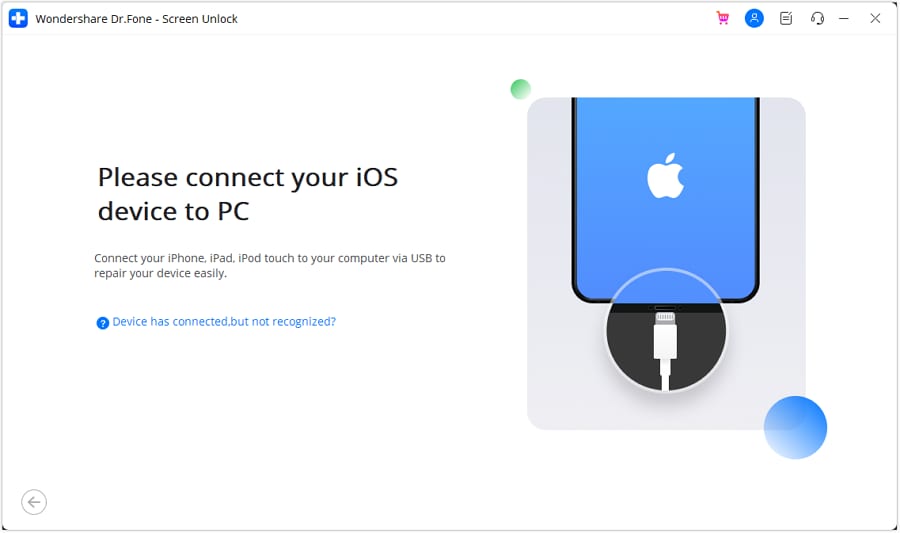
- Step 6: At this juncture, you have to determine whether your phone is a GSM or CDMA device. You can see this through Settings > General > About. When it’s a CDMA device, the cellular/SIM compatibilities will be disabled. However, you can still use the phone for its other uses. Once you click Unlock Now, you’ll see this pop-up warning. Click Got it!

- Step 7: Next, you’ll have to Jailbreak your device for a full iCloud activation lock bypass. Click the Jailbreak Guide or the Watch Video button on this pop-up.
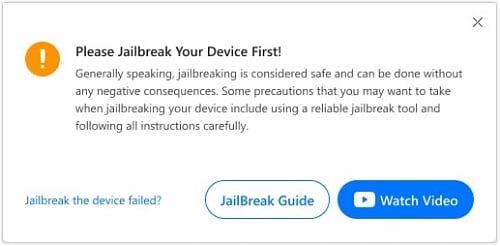
- Step 8: Once Dr.Fone confirms that your device is jailbroken, it will automatically start the bypass process.

- Step 9: Once the process is completed, click Done.

Conclusion
In this 2024 guide, you’ve explored various methods to check the iCloud Activation Lock status, an essential feature for iOS device security. Understanding how to verify this status, especially when buying or selling devices online. You’ve also learned how to remove them, so you know how to dispose of your devices properly. Managing your device’s iCloud Activation Lock status is key to ensuring its security and usability.
For those facing challenges with forgotten Apple ID credentials or needing to unlock their devices, Dr.Fone stands out as a reliable solution. It also has capabilities that extend beyond iCloud issues. Overall, it’s a valuable tool for a range of phone-related needs, so we recommend you to put it to use.
Tips: Are you searching for a powerful Screen Unlock tool? No worries as Dr.Fone is here to help you. Download it and start a seamless unlock experience!
How To Bypass iCloud By Checkra1n Even On Apple iPhone 13 If You’ve Tried Everything
Since iOS 12.3, Apple has been using its new Activation Lock feature to deter theft. This security measure requires users to enter their iCloud login information to use an iPhone or iPad previously locked by someone else.
While this is a welcomed addition for those looking to protect their device, it can also be a major inconvenience for those who have lost or forgotten their iCloud password. Checkra1n is a new tool that allows users to bypass iCloud activation without entering any login information. You will learn in this post how to use Checkra1n iCloud bypass to unlock your Apple iPhone 13 or iPad.
Let’s get started!
Part 1: What is Checkra1n?
Checkra1n is a jailbreak tool that allows you to jailbreak your Apple iPhone 13 or iPad running iOS 12.3 and up. As part of the jailbreak tool team, it is one of the most popular jailbreak tools. Checkra1n is a semi-tethered jailbreak tool, meaning you will need to re-jailbreak your device each time you reboot it. It is, however, a very reliable jailbreak tool that is easy to use.
Checkra1n is the only jailbreak that allows for the BFU (Before First Unlock) acquisition of locked devices with an unknown passcode. It means that if you have a locked iPhone that you don’t know the passcode for, you can still use checkra1n to jailbreak it and access the data.
Additionally, checkra1n does not require you to sign the jailbreak IPA file (using AltStore or the Developer Account at Apple), which makes it much easier to use. Overall, checkra1n is a powerful tool that you can use to access data on locked iPhones, even if you don’t know the passcode.
Pros
- The tool doesn’t require tech skills
- It supports iPhones, iPads, and many other devices
- Supports a wide range of hardware platforms
- It is not possible to exploit remotely
Cons
- Jailbreaking older devices is limited
- A reboot won’t save them
Part 2: How to Bypass iCloud Activation Lock with Checkra1n?
You may consider using Checkra1n if you are looking for a method to bypass the iCloud activation lock. You can remove the iCloud activation lock from your Apple iPhone 13 or iPad using this method.
1. How to Jailbreak an iOS Device with Checkra1n?
Step 1: Enter the BIOS settings after the computer has rebooted.
Step 2: Go to Boot Menu and select the jailbreak USB drive you just created.
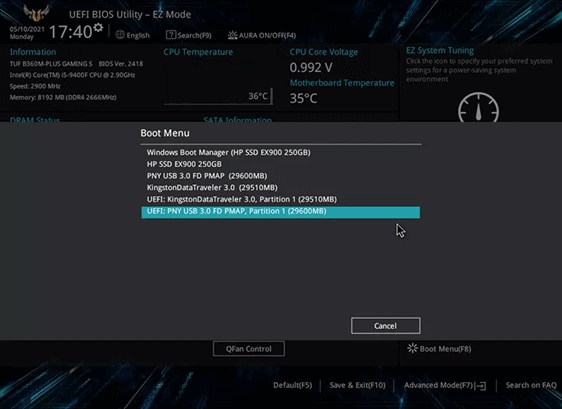
Step 3: Plug your iOS device into the PC and click [Start].
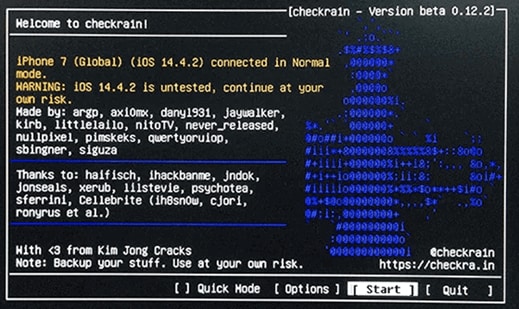
Step 4: The software may inform you that your iOS version is not tested. Follow the steps below to enable the Start key on the iOS device at risk if you are ready to jailbreak.
Follow these steps to enable the [Start] key:
- Select [Options].
- Ensure that Untested iOS, iPadOS, and TVOS versions are checked.
- To return to the homepage, click [Back].
- To begin the jailbreaking process, click [Start].
Step 5: You will be shown how to enter DFU mode on the Apple iPhone 13 device. Follow the instructions step by step.

Step 6: You have successfully jailbroken your device.
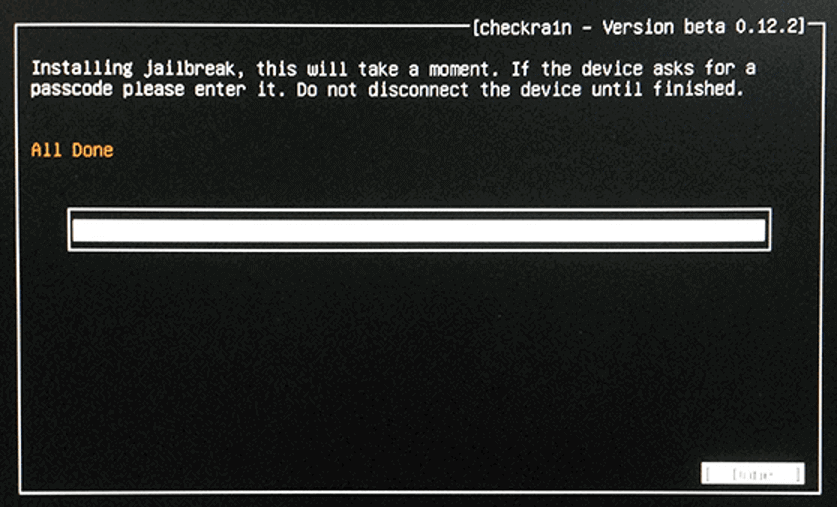
Since Cocosenor bypass Tuner now uses checkra1n 0.12.2 to help jailbreak, it won’t be able to jailbreak iOS 14.5.
2. How to Bypass iCloud Activation Lock with Checkra1n?
The next step is to figure out how to bypass iCloud with Checkra1n iCloud Bypass. We will show you how to use the method on a Mac. The Checkra1n installation process has a few technical aspects, but if you follow the steps, you shouldn’t have any problem.
Step 1. Download Checkra1n from the official website.
Step 2. Using the Terminal app, install brew and usbmuxd by entering the following commands:
- /usr/bin/ruby -e “$(curl -fsSL https://raw.githubusercontent.com/Homebrew/install… )”
- brew install usbmuxd
Step 3. Launch Checkra1n once those have been installed.
Step 4. Follow the instructions to jailbreak your Apple iPhone 13 by connecting it to your computer.
Step 5. The following command will create a tunnel from Port 2222 to Port 44 (or 22 if this fails) using USBmuxd’s built-in iProxy tool:
- iproxy 2222 44
Step 6. Enter the following command in a new Terminal window by pressing Command + T:
- ssh root@localhost -p 2222
Step 7. To move the setup file and patch the system, enter the following commands:
- mount -o rw,union,update /
- mv /Applications/Setup.app /Applications/Setup.bak
- rm -rf /Applications/Setup.app
Step 8. Lastly, enter these two commands to clear any springboard processes and clear the setup file’s cache:
- uicache -all
- Killall backboardd
Checkra1n will bypass the iCloud Activation Lock after you enter the last command.
Using the Terminal app and entering many unfamiliar commands may be intimidating for some people, but if you copy exactly what we’ve shown you, you’ll be fine.
Part 3: Easy Tool for iCloud Activation Lock
Dr.Fone - Screen Unlock
It is possible to bypass the iCloud activation lock with a tool called Dr.Fone - Screen Unlock. This powerful tool can bypass the iCloud activation lock on any iOS device, regardless of the version of iOS.
Here’s how to use Dr.Fone - Screen Unlock to bypass the iCloud activation lock:
Step 1. Choose Screen Unlock from Dr.Fone after installing the program.

Step 2. Click on “Bypass Activate Lock.”

Step 3. Please select the “Start” button for the next steps.

Step 4. Please confirm which device you have.

(For GSM devices, you can enjoy all functions)
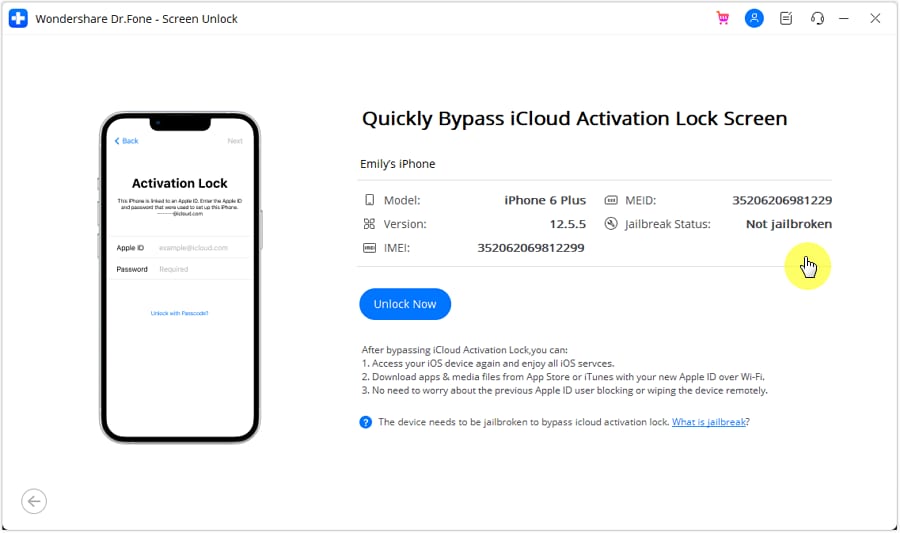

(For CDMA devices, some functions will be limited, so you cannot use them anymore.)
Step 5. Do you jailbreak your device? If not, you can do our jailbreak guide for this step.

Step 6. Please wait for a minute, and the process will be over.

Step 7. Congrats, the iCloud activation lock is bypassed completely.

You can now access and use your Mac without any activation lock. In addition to bypassing the iCloud lock, your new Apple ID is compatible with your cellular network or iCloud.
Conclusion
Many requirements exist to remove the iCloud Activation Lock without a password. With WonderShare-Screen Unlock, you can remove your Apple ID and password associated with the iCloud Activation Lock. With this easy-to-use tool, you can remove the lock screen from your phone without losing any data. Any other suggestions you have to fix this issue would be greatly appreciated!
Also read:
- [New] Football Film Study Premier Insights Infographic
- [Updated] Perfecting Your Sims 4 Live Action for 2024
- 2024 Approved Revisiting Video Broadcast Choices Post-Wirecast
- Bring Imagination Alive Start with Microsoft's Movie Maker on W11
- Bypass iCloud Activation Lock with IMEI Code On your iPhone 11 Pro
- From Ordinary to Outstanding Crafting Unique Shorts Thumbnails
- How To Bypass iCloud Activation Lock on Mac For Apple iPhone 7 Plus?
- How to Unlock iCloud lock from your iPhone 6s Plus and iPad?
- In 2024, A Visual Voyage Through Youtube's 2017 Data Deluge
- In 2024, Easy Fixes How To Recover Forgotten iCloud Password From your Apple iPhone 13 mini
- In 2024, Full guide to iPhone XR iCloud Bypass
- In 2024, New Guide How To Check iCloud Activation Lock Status From Your iPhone 15 Pro
- In 2024, The 10 Best Tools to Bypass iCloud Activation Lock On Apple iPhone 12 Pro You Should Try Out
- In 2024, The Ultimate Guide to Bypassing iCloud Activation Lock from Apple iPhone 11 Pro Max
- iPhone 11 Pro Max iCloud Activation Lock Bypass
- Step-by-Step Guide: Fixing Ongoing Display Tremors & Glitches
- Streamline Your Team's Productivity Using ChatGPT Strategies and Tips
- Transformation WebP Vers GIF Sans Frais : Utilisez L'outil De Conversion Gratuit De Movavi en Ligne
- Unlocking Apple's Audio World A Download Guide for iOS Users
- Title: Unlock Your Device iCloud DNS Bypass Explained and Tested, Plus Easy Alternatives On iPhone 13
- Author: Lydia
- Created at : 2024-11-30 16:44:50
- Updated at : 2024-12-06 16:06:11
- Link: https://activate-lock.techidaily.com/unlock-your-device-icloud-dns-bypass-explained-and-tested-plus-easy-alternatives-on-iphone-13-by-drfone-ios/
- License: This work is licensed under CC BY-NC-SA 4.0.
